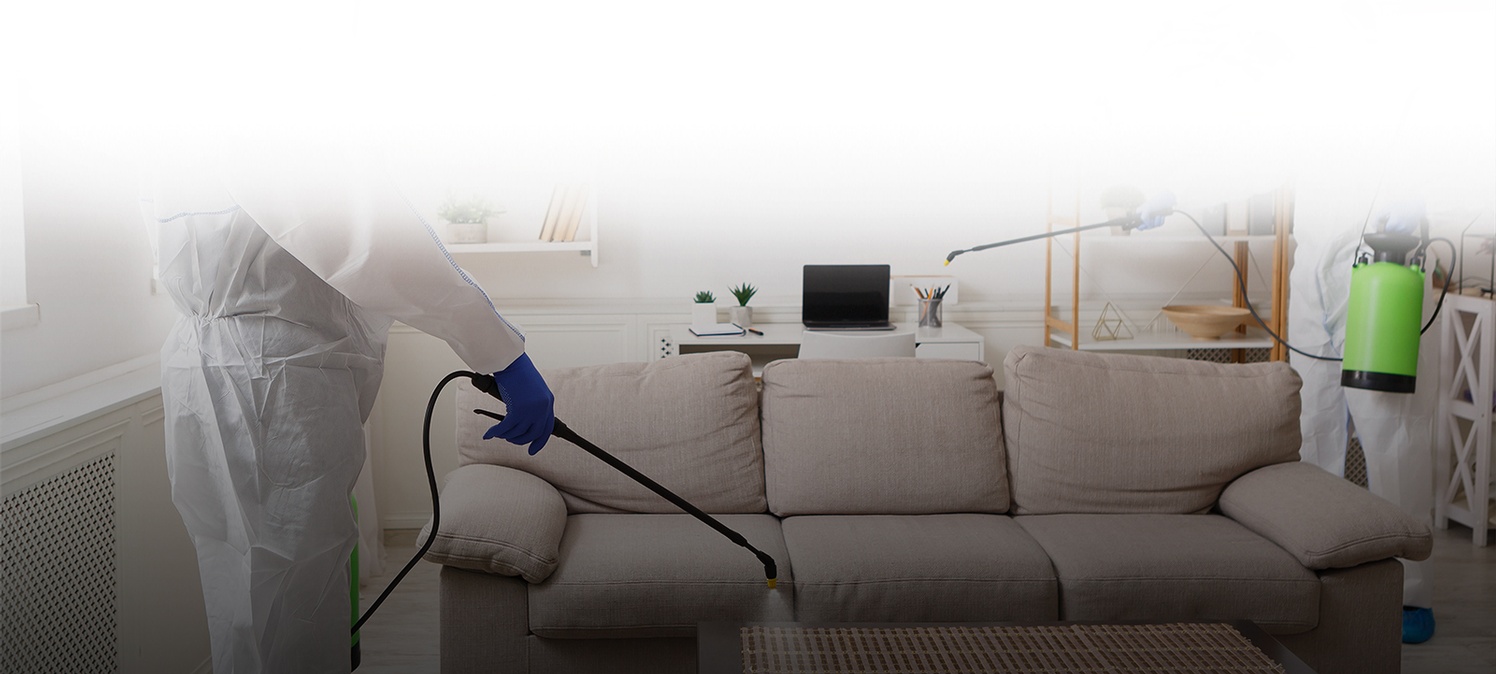-
- What do I have to do to prep my area on treatment day?
We suggest you keep aisles and walkways as clear as possible so our technicians can easy get to every needed part of each room. Additionally, keep surfaces as free from clutter as possible so that our mist will have maximum coverage. Also, please remove or cover any fruit or other unwrapped food items. Lastly, pets and plants are sensitive to our disinfectants so please cover them thoroughly or remove them from the treatment areas.
-
- Can I be inside while disinfecting?
While it’s okay to be in other areas of the facility that aren’t being directly treated, we will not disinfect an occupied space if the person is not wearing appropriate PPE (mask, goggles, etc).
-
- How long does the treatment last?
Our treatment kills most bacteria and viruses within 2 minutes. However, there is no “ongoing” active solution. Our goal is to stop the gradual spread of these pathogens before they become prevalent throughout your facility. There are antimicrobial solutions that claim ongoing prevention for extended periods but this treatment is significantly more costly and the effectiveness against certain pathogens including COVID-19 is still in question. See: https://resources.
wellcertified.com/articles/ are-antimicrobial-additives- the-answer-to-stopping-the- spread-of-covid-19- -
- How often should my facility be treated?
This is based on personal desire, traffic volume, current cleaning strategies, etc. While daily disinfecting is recommended for any shared or public space, budgetary constraints may factor into outsourcing frequency. We currently have clients multiple times per week, once per week, and biweekly based on several factors. We will work with you to develop the best plan.
-
- What is an “average” cost for your service?
The reason we prefer to custom price each job is because not all layouts are the same and frankly, we are looking to give you the most competitive rate possible. While a 10,000 sq ft job at one location at a certain day and time may be charged at a rate of 3-6 cents per square foot, another 10,000 sq foot job close to where a crew already is, scheduled in advance, contracted for multiple visits, etc, may be as low as 1.5 cents per square foot. Again, we try to be as affordable as we can, especially during these unique times.
-
- How long does it take to disinfect my area?
Every area is slightly different based on layout, etc., however with one technician we can cover almost 20,000 square feet in an hour. Most facilities are less than 10,000 square feet and therefore treatment is typically less than 20-30 minutes.
-
- How is your product different than bleach and will it discolor my surfaces and fabrics?
We do not use bleach. Bleach is a common name for a sodium hypochlorite/water solution. Sodium hypochlorite, in pure form, is a water soluble, yellowish liquid that contains about 12% chlorine and has powerful oxidizing properties. It will corrode or destroy most metals, and react with many chemicals to produce toxic chlorine gas. Bleach can dissolve fabrics, paper, and many other organic materials. Even household bleach (5%) is still a potent oxidizer and disinfectant and has very high alkalinity. When working with bleach, extreme caution must be taken. Even if diluted the fumes can be harmful to the respiratory system. Mild irritation to burns can occur from skin contact, and eye contact can result in permanent damage. Bleach contains NO cleaning agents.
Quat, which is what we use, is the common name for a Quaternary Ammonium Chloride compound. There are about 300 types all with varying anti-microbial efficacies. Quats are generally surfactants with positive charges. Due to this, quats contain the power to clean. Since they are low in toxicity and corrosiveness, they are user friendly and effective.
Although the major advantage of bleach is the low cost, it comes with many disadvantages. Bleach is highly corrosive, contains toxic fumes, dissipates quickly, discolors most fabrics, causes irritation to the eyes and nose, has no cleaning ingredients, dulls floor tiles, and damages floor finish and grout. Bleach is dangerous if mixed with many chemicals and cleaners.
On the other hand, the disadvantage of quat is the price in comparison to bleach. Quat can also have reduced activity in the presence of soil. However, the advantages of quat is what make it a superior disinfectant than bleach. Quat has excellent wide spectrum ability to kill germs, film forming residual, low toxicity and corrosiveness, good shelf life, works in a variety of pH ranges, highly concentrated, no odor, and safe on mostly all surfaces. The neutral formulas will not dull floor finish. Quat is the premier choice disinfectant for most hospitals and health care facilities.
